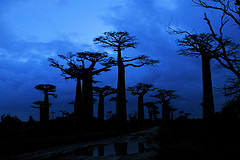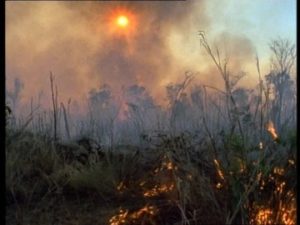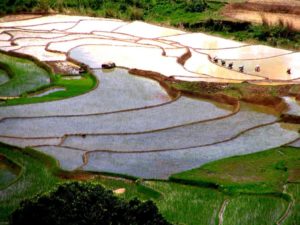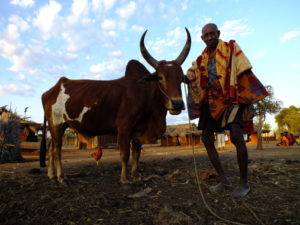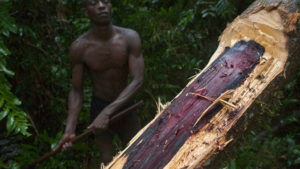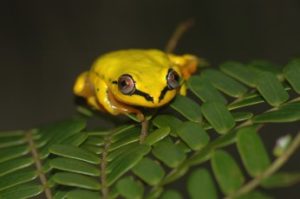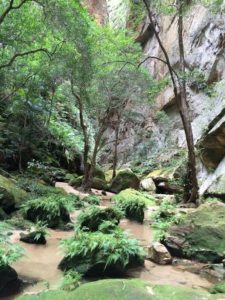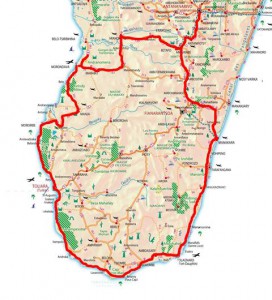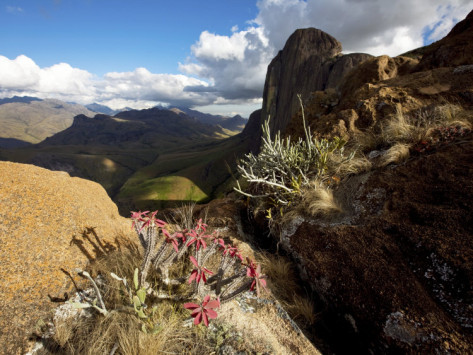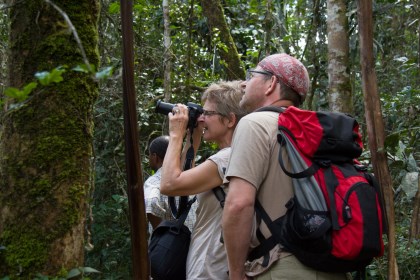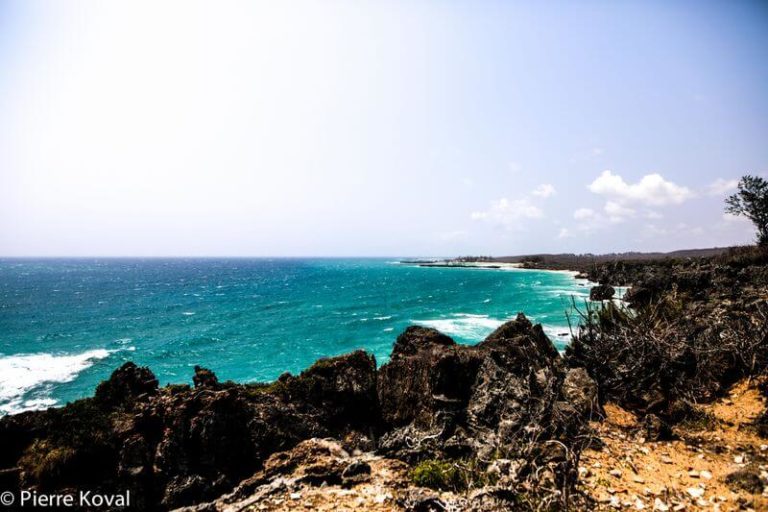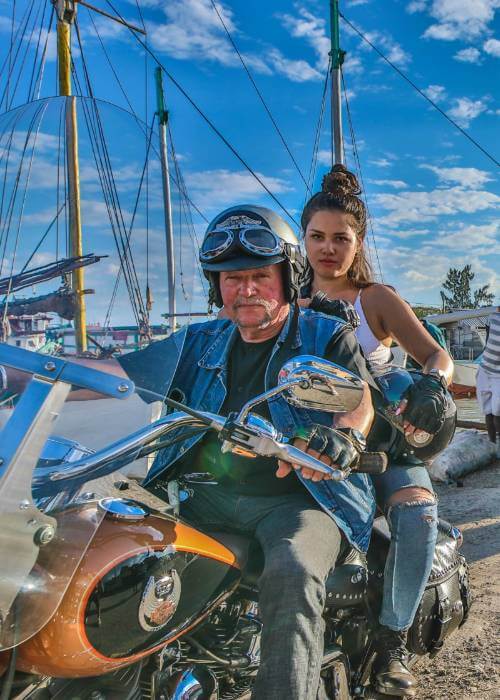The conservation of nature in Madagascar
Madagascar is considered to be biodiverse paradise on this earth. An extraordinary flora with numerous orchids, flowering plants and tree species that exist nowhere else in the world is populated by an equally impressive and unique fauna: Lemurs, Fossa's and numerous birds and Insects, which are classified as endemic, are at home on the island. For a long time the Animals and plants in Madagascar develop completely unrestricted and free. There were hardly any enemies and man colonized the island only relatively recently. But then life began to change for the Animals and plants in Madagascar to change. As always, when man comes into play, nature faces various changes that rarely look good. First of all, people needed space to build their villages and houses. They cleared large parts of the rainforest for this purpose. In addition, people needed space to farm, and they cleared parts of the rainforest for that as well. Their livestock also needed sufficient space in order to thrive, which in turn required a Rainforest clearing in Madagascar brought with it. Today are of the former forest stands, only about 10 percent remain left. An end to the clearing is not yet in sight. That this will have catastrophic consequences for the Ecosystem in Madagascar and many of the numerous animal and plant species that make Madagascar so unique will soon no longer be found on this planet, has not yet reached the people of Madagascar. The worries about their own survival in the poor country are too great. Corrupt politicians and civil servants as well as the unstable governmental situation do not exactly make nature conservation an easy and uncomplicated project. In the following we would like to give a small insight into the current situation in Madagascar grant. This is intended to create in you a better understanding of the problems that the Madagascar nature has. In addition, the following remarks are intended to draw attention to the fact that the Tourism in Madagascar can play an important role in nature conservation. Accordingly, if you have a Trip to Madagascar plan and like your next Vacation on this impressively beautiful island, it is a good idea to take a quick look at the following information in advance. If you have further questions or are interested in concrete information about our travel offers we recommend that you contact us briefly and without obligation.
The conservation problems in Madagascar
Some problems with which the Madagascar nature The problems faced by the company in this area have already been mentioned in the introduction. At this point, reference should still be made to this clearly. Man plays the largest and most important role in the process, which is the Madagascar nature got into such a predicament. From the beginning, the People in Madagascar depended on agriculture, and from the beginning Madagascar tended to be one of the poorer countries. Clearing for agriculture and livestock were therefore from the beginning a major problem in Madagascar. Later, slash-and-burn was banned, but this ban was lifted only a short time later. The People in Madagascar However, they did not only clear the rainforest on a large scale, but often simply destroyed smaller parts of the rainforest in order to be able to cultivate a field for their own family and to ensure the survival of their own. The Population Madagascar is only partially aware of the consequences of these actions, even today. This is mainly due to the fact that many people are so poor that their entire daily routine revolves around getting something edible on the table for the next meal. Agriculture is not only the most important link to ensure the nutrition of the Madagascans, but also the only way to generate income. About the fact that for the Planting bananas, coconut palms or sisal many endangered animal species and plants have to make way for, is easily pushed into the background in this respect.
Madagascar rice
Many people think that particularly large consumption of rice is on the agenda in Asian countries. In fact, however, nowhere in the world is as much rice eaten as in Madagascar. And this is a real problem. In Madagascar, rice is grown either as upland rice or in terraces. Both variants require prior Rainforest clearing and are blessed with a relatively low yield. The climate and ecological conditions are favorable for the Rice cultivation in Madagascar to be rather unfavorable. Other crops, such as potatoes, would thrive much better in Madagascar and satisfy a much larger proportion of the population for longer. However, rice in Madagascar is virtually cultic worship. Probably came the first grains of rice already more than 1,000 years ago to Madagascar, and since then it has been impossible to imagine the plates of the Madagascans without this small grain. The cultural significance also quickly becomes apparent when one considers, for example, that the largest and most valuable banknote in Madagascar is the Image of rice plant wears. For environmentalists, the Rice cultivation in Madagascar but a real horror: many small, non-contiguous fields are cultivated so intensively that not only do yields continue to fall, but also that the soil becomes more and more parched. As soon as the fields yield nothing more, the people move on and clear new parts of the rainforest in order to be able to cultivate more rice fields. Great efforts would therefore be appropriate, on the one hand, to protect the Rice cultivation in Madagascar to optimize: Larger yields on smaller areas with less work and less exploitation of the soil and nature would be desirable. In addition, attempts should be made to integrate other staple foods into the diet of the Malagasy in order to achieve greater yields on smaller areas and to satisfy more people in the long term.
Zebu cattle in Madagascar
In addition to rice cultivation, cattle are also a particularly great threat to nature in Madagascar. In Madagascar, cattle are considered a source of food and at the same time a status symbol. In the meantime the Number of zebu cattle living in Madagascar long since outstripped the number of people living there. The cattle, however need pasture and enough spaceto be able to thrive splendidly and healthily. This in turn leads to numerous clearings. Many cattle, especially zebus, are not necessarily kept in Madagascar for their meat or their milk, but simply because they a sign of wealth and Prosperity are. In the meantime, however, projects are also being initiated that intend to use the meat of the Zebus to export. If, in this context, a comprehensive Cattle breeding in Madagascar this could have bitter consequences for nature and the ecosystem on the island, as it can be assumed that even more forest areas will have to give way in order to maintain the plus of cattle.
The overexploitation in Madagascar
Another important factor that has little to do with the average Malagasy and is not integrated into the daily lives of the population is the Overexploitation of precious woodswhich is practiced excessively in Madagascar. Many tons of precious woods are harvested annually illegally or semi-legally felled in the rainforests of Madagascar and then transported abroad. Behind this are mostly bribed or corrupt politicians and officials who hold their protective hand over these illegal activities. Just a few years ago, the Beating the precious woods in Madagascar strictly prohibited. However, due to the turbulent and unstable change of government in 2009, corruption has clearly reemerged in various areas. In addition, there is another important factor that is not only related to the logging of precious woods: many parts of Madagascar are not very accessible, are not inhabited by people and are difficult to reach on foot or by car. This means that Controls in these areas only very rarely or not carried out at all. Also, no one in Madagascar can afford the enormous costs that would be associated with such controls. Accordingly, it is above all the illegal timber traderbut also hunters who profit from the current conditions on the island. Also, hunting of many endangered species is still tolerated far too often in Madagascar.
How can improvements be made?
The previous remarks have clearly shown that Madagascar has a large and difficult task ahead of it in terms of conservation. Above all, the Education and integration of the Malagasy should actually be at the top of the list of tasks to be tackled. Unfortunately, no one really seems to feel responsible for this. But only when people know what slash-and-burn farming for more arable land or charcoal, which is so popular everywhere, can do for their current Natural paradise means, a change in thinking can begin. On the other hand, however, this will only be possible if people are given real opportunities. Alternatives offered become. As long as agriculture is the most important employer for most people in the country and at the same time the main source of food, the Madagascans are dependent on cultivating their small fields, harvesting them and planting new ones. An alternative may be, for example, the Tourism be when it comes to sustainable projects. The money earned there can not only flow directly into various nature conservation projects, but can also be used in parallel to relieve the burden on the population. In this context, however, it would have to be ensured that the money actually reaches where it is needed.
The previous Efforts by conservation organizations and also from the governments of Madagascar are not enough to stop the people on the island from pillaging. Just a few years ago, scientists assumed that already in the year 2020 no more original rainforest on Madagascar would be found. These estimates are now considered outdated, but they have by no means been discarded. The year has merely shifted back a little. Many Nature reserves and National Parks have now been established on Madagascar, but this does not stop hunters, farmers and others from continuing to exploit nature on the island for various reasons. There is by no means always a malicious intent behind this, as has become clear in the comments above. It is therefore important that the Species and nature conservation in Madagascar exactly now finally being implemented to an appropriate extent. You too can help with a Trip to Madagascar make an important contribution to this. If, for example, you are at one of our Nature travel visit one of the many national parks, they contribute to the preservation of this park with the corresponding entrance fee. Also all other Revenue from the tourism sector can help with this, Protect the nature of the Red Island. Because once the rainforest stands there have been cut down, not only will numerous unique life forms be doomed, but human life on the island will no longer be possible.

